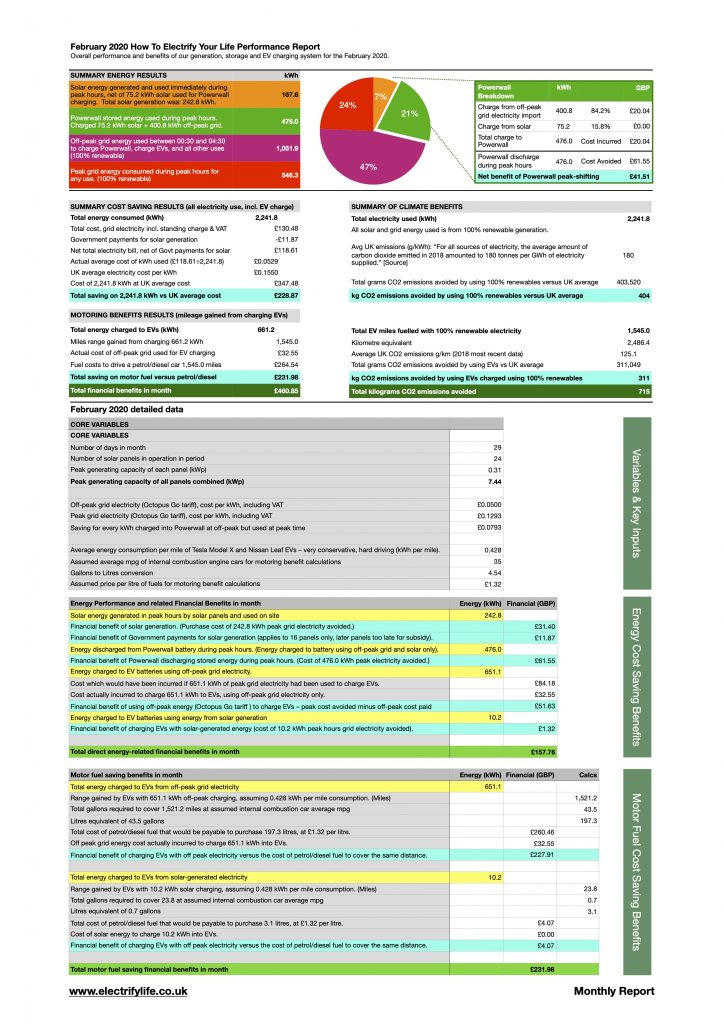February 2020 was a month of severe storms (Ciara, Dennis and Jorge) which brought widespread flooding and general misery to much of the North of England. Fortunately, all the solar panels stayed firmly attached to the roof and even managed to generate a bit of electricity on the few sunnier days between the downpours.
So, once again, the bulk of the emissions-reducing and cost-saving contributions came from the Octopus Go tariff, providing dirt cheap, green-sourced, electrons to the two EVs and the Powerwall between 00:30 and 04:30 every night. Click the button below if you’d also like to sign for 5p/kWh electricity sluiced into your EV or domestic storage battery in the small hours.
As usual, the detailed monthly performance report is available by clicking the image at the end of this post. The headlines are as follows.
- £460 financial benefit in the month. This saving compares the cost we actually paid for all the electricity we used (overwhelmingly during the night on the Octopus Go tariff to charge the cars and the domestic storage battery) versus the cost we would have paid at the UK average rate per kWh. It includes a saving of £232 for the petrol we did not have to buy to drive the 1,545 miles charged to our EVs during the month.
- 404 kg of CO2 emissions avoided by using only 100% renewably-sourced electricity versus the emissions that would be caused by using electricity produced at the UK average generation mix of renewable and carbon-based sources.
- 311 kg of CO2 emissions avoided by using only 100% renewably-sourced electricity to power 1,545 miles of motoring in EVs, versus the emissions that would have been caused by covering the same distance at the UK average g/km CO2 emissions rate.
